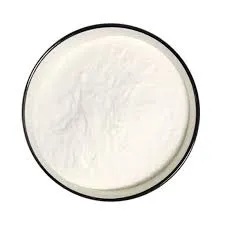
kol . 17, 2024 01:01 Back to list
Exploring the Applications and Benefits of Hydroxyethyl Cellulose in Various Industries
The Versatile Uses of Hydroxyethyl Cellulose
Hydroxyethyl cellulose (HEC) is a water-soluble polymer derived from cellulose, the structural component of plant cell walls. Its unique properties make it an essential ingredient across various industries. This article explores the diverse uses of hydroxyethyl cellulose, highlighting its significance in multiple applications, from personal care products to construction and pharmaceuticals.
1. Personal Care and Cosmetics
One of the most common applications of hydroxyethyl cellulose is in the personal care and cosmetic industry. Due to its thickening and stabilizing properties, HEC is often included in formulations for shampoos, conditioners, lotions, and creams. It enhances the texture and consistency of products, ensuring smooth application and improved sensory experience. HEC also acts as an emulsifier, helping to maintain the stability of oil-in-water formulations, which are prevalent in many skincare products.
Moreover, HEC is beneficial in makeup formulations, such as foundations and gels. Its ability to provide a smooth and even finish on the skin makes it a preferred choice for cosmetic chemists. The film-forming properties of hydroxyethyl cellulose help in providing long-lasting wear, which is particularly valued in products like waterproof mascara and long-lasting lipsticks.
2. Pharmaceuticals
In the pharmaceutical sector, hydroxyethyl cellulose plays a crucial role as a binder and thickening agent in various dosage forms. It is commonly used in tablets, capsules, and liquid formulations to ensure uniformity and enhance the stability of active ingredients. HEC aids in the controlled release of medications, improving bioavailability and therapeutic effect.
Additionally, hydroxyethyl cellulose is utilized in topical formulations, including gels and ointments. Its ability to create a gel-like consistency allows for easy application and adherence to the skin, delivering active components effectively. The use of HEC in ophthalmic solutions is also notable; it helps to improve the viscosity and retention time of eye drops, providing relief to dry or irritated eyes.
hydroxy ethyl cellulose uses

3. Construction and Building Materials
Hydroxyethyl cellulose is increasingly finding applications in the construction industry, particularly in cement and tile adhesives, as well as in paints and coatings. As a thickening agent, HEC enhances the workability of mortars and improves adhesion properties, ensuring better performance and reduced wastage during application. The incorporation of HEC helps in prolonging the open time of adhesive mixtures, giving builders ample time to adjust and position materials before they set.
HEC is also valued for its water-retention properties, which help prevent cracking and improve the durability of cured products. In paints and coatings, hydroxyethyl cellulose contributes to the uniform distribution of pigments and additives, ensuring a consistent finish and enhancing overall product performance.
4. Food Industry
In the food industry, hydroxyethyl cellulose can serve multiple purposes. As a food additive, it functions as a thickener, stabilizer, and emulsifier in various food products. HEC is commonly found in sauces, dressings, and processed foods, ensuring an appealing texture and improved shelf life. Its ability to retain moisture can enhance the mouthfeel of low-fat or sugar-reduced products, making it a valuable ingredient in today's health-conscious market.
Conclusion
Hydroxyethyl cellulose is a multifunctional compound that has carved its niche across numerous industries due to its versatile properties. From enhancing personal care products and pharmaceuticals to improving the performance of construction materials and food items, HEC’s applications are vast and diverse. As research and innovation continue in the field of material science, it is likely that new uses for hydroxyethyl cellulose will emerge, further solidifying its importance in modern manufacturing and consumer products. The ongoing demand for sustainable and effective ingredients ensures that HEC will remain a key player in various applications in the years to come.
-
Versatile Hpmc Uses in Different Industries
NewsJun.19,2025
-
Redispersible Powder's Role in Enhancing Durability of Construction Products
NewsJun.19,2025
-
Hydroxyethyl Cellulose Applications Driving Green Industrial Processes
NewsJun.19,2025
-
Exploring Different Redispersible Polymer Powder
NewsJun.19,2025
-
Choosing the Right Mortar Bonding Agent
NewsJun.19,2025
-
Applications and Significance of China Hpmc in Modern Industries
NewsJun.19,2025







